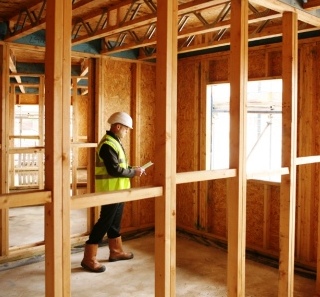Wood for Good has launched a series of short animations to illustrate the potential to sequester and store millions of tonnes of carbon dioxide in UK homes every year. The videos illustrate how trees capture CO2 from the atmosphere and store the carbon in wood, where it remains until timber products reach the end of their physical lives.
 The work builds on a number of recent industry successes showing the benefits of timber and timber products as versatile and cost effective as well as sustainable. These include the publication of the timber industry Lifecycle Database and the completion of Kingsgate House in West London.
The work builds on a number of recent industry successes showing the benefits of timber and timber products as versatile and cost effective as well as sustainable. These include the publication of the timber industry Lifecycle Database and the completion of Kingsgate House in West London.
The lifecycle database research shows that all timber products studied have a carbon negative footprint – that is, they have absorbed and stored more carbon dioxide than has been emitted through harvesting, kilning, processing, manufacture and transportation.
Kingsgate House in West London became the first major construction project in the world to achieve PEFC project certification and contained 1092 metres cubed of PEFC certified cross laminated timber. The seven-storey building provided 43 affordable residential units in a busy part of London and demonstrated the potential for using CLT to save time and money in addition to reducing the amount of embodied carbon on the scheme. The project showcases wood’s natural role as a carbon store, and when coupled with the time and cost-savings offered by timber’s off-site construction methods – which can slash build times by up to 14 weeks – the benefits for use in new housing schemes are apparent.
The new Wood For Good films show the carbon in one tree, one hectare of trees and then consider one house, a typical housing estate and the carbon stored in 200,000 timber houses. The ‘Build with Carbon’ campaign and “Follow the Tree” animations are supported by a range of still images and case studies of existing timber buildings in the UK from schools to high rise housing and even an individual wooden window frame.
An average 3-bed timber framed house sequesters and stores roughly 19 tonnes of CO2 in its timber products. If the UK were to reach the Labour Party’s current aspiration of building 200,000 homes per year – using timber frame methods – this would mean an additional 3.81million tonnes of CO2 sequestered and stored every year.
In addition to high sequestered carbon, timber products also require very low energy input for production compared to other mainstream building materials giving them very low embodied carbon values. Yet despite these benefits the majority of UK housing continues to be delivered through carbon-intensive building methods.
David Hopkins, Executive Director of Wood for Good, said:
“The message is simple: Build with Carbon. All timber products represent carbon emissions which have been sequestered and stored – acting as a physical carbon market, not a derivative one. We need to encourage the trade in this physical carbon market and in so doing drive investment back into our forests."
BWF Policy Executive Matt Mahony commented:
"Now that the data is available, we are seeing a lot of activity which will prove vital in getting the message out to contractors, specifiers and homeowners that timber is frequently the best option for high quality, sustainable and cost-effective applications.
"Industry has been working hard to get the information out there, as you can see from the LCA database and the Heriot Watt University window study which quantifies the significant carbon savings from the use of timber frame instead of PVC-u. The latter also demonstrated that timber offers the lowest cost option for properties in a typical urban/suburban setting if whole life costs are considered.
"We are also delighted to see politicians begin to engage with the BWF’s manifesto which sets out the benefits of the joinery and woodworking industry in terms of how our industry supports the economy and vitally how we help to deliver maximum results with minimum environmental impact."